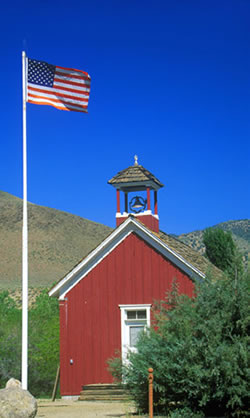School Buildings Play an Important Role in a Quality Education

PHOTO © SPIRIT OF AMERICA/SHUTTERSTOCK
In a recent pilot study by the University of Salford (Manchester, UK) and architects, Nightingale Associates, it was found that the classroom environment can affect a child’s academic progress over a year by as much as 25 percent.
The year-long study took two lines of enquiry. The first was pupil data, such as age, gender and performance level in math, reading and writing at the start and end of an academic year. The second evaluated the holistic classroom environment, taking into account different design parameters such as classroom orientation, natural light and noise, temperature and air quality.
Other issues evaluated were flexibility of space, storage facilities and organization, as well as use of color. The holistic assessment included both classroom design and use factors to identify what constitutes an effective learning environment. Notably, 73 percent of the variation in pupil performance driven at the class level could be explained by the building environment factors measured in this study.
Various studies in the U.S. have proven similar results. Improving the built environment can be as simple as improving air quality. Key factors outlined by the EPA include:
- Providing a quality HVAC systems. This means regularly inspecting and maintaining the system, changing the filters, providing outdoor air ventilation according to ASHRAE standards or local codes.
- Controlling moisture and mold. This means routine inspections, establishing a prevention and remediation plan, maintaining humidity levels and promptly addressing problems.
- Establishing an Integrated Pest Management (IPM) plan. This means inspecting and monitoring the school environment for pests, using spot treatments and baits rather than broad pesticide applications and communicating with occupants prior to pesticide use.
- Ensuring that proper cleaning and maintenance procedures are in place. This includes conducting routine inspections, training staff on proper cleaning procedures, ensuring materials safety data sheets are available and using the least toxic cleaners possible.
- Making smart materials selections. This means establishing low-emitting purchasing and use policies covering the purchase of everything from cleaning products, to furniture, to building materials.
Environmental quality, indoor and outdoor spaces, furniture and furnishings, and building design all play an important role in a quality education. Our buildings are designed to support behaviors which in turn support teaching and learning — connecting quality education and the built environment.
This article originally appeared in the School Planning & Management September 2013 issue of Spaces4Learning.